#Character types
Explore tagged Tumblr posts
Text
one of the best character types i think is insane man in a long fur coat
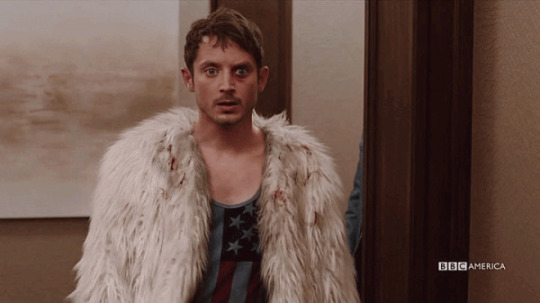
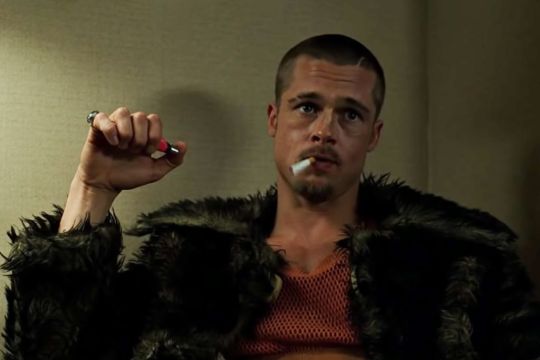

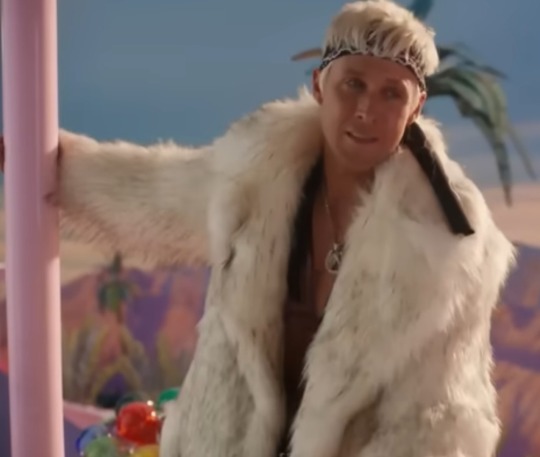
#character types#character design#character archtypes#dirk gently#dirk gently's holistic detective agency#dghda#todd brotzman#fight club#tyler durden#brad pitt#candyman#candyman 1992#candyman 2021#tony todd#barbie#barbie 2023#ken#ken barbie#ryan gosling#insane man#insane men
22K notes
·
View notes
Text
The Different Portrayals of Papageno in "The Magic Flute" (Die Zauberflöte)
Of all the characters in Mozart's The Magic Flute, Papageno is probably the one most open to interpretation by the singer and the stage director. As I've watched different performances of the opera, the funny bird-catcher seems almost like a different character in each version.
Every singer brings unique qualities to the role, but I've narrowed the most common portrayals down to four – which can be combined with each other too. I've seen baritones give excellent performances in every one of these portrayals, as well as in blends of them.
The Innocent

This is the sweetest portrayal of Papageno and the most endearingly simple-minded. He’s most often portrayed by younger baritones: the more baby-faced, the better. This uneducated, naïve young creature of the woods and mountains is almost a Peter Pan figure (without Peter Pan’s brashness or ruthlessness, though with a little of his boyish cockiness), who has never quite grown up. His childlike qualities include total earnestness as he asks questions with obvious answers, childlike quaking and whimpering in the face of danger, and childlike sobbing in moments of despair. Yet while his failure to “be a man” sometimes tries other people’s patience, no one except Monostatos can really dislike him. His friendly, cheerful, exuberant yet gentle demeanor is filled with natural charm, and the broad, sunny comedy of nearly all his scenes keeps the audience laughing, yet his boyish vulnerability is touching too, even when it’s played for laughs. Most endearing of all is his lively, wide-eyed, unabashed joy in all of life’s most simple pleasures. He might be an unsophisticated man-child, but whatever he lacks in maturity or wisdom he makes up for in zest for life and in warmth of heart.
The Peasant

This is a more mature, down-to-earth Papageno, who clearly represents the common man. He comes across as an average, hardy 28-year-old peasant, lifted straight out of the 18th century Austrian countryside into an exotic fairy tale world. Although uneducated and unrefined compared to Tamino, he’s not particularly naïve, but conveys sound working-class intelligence and practicality, and he often delivers his funny lines with a knowing, snarky wit. This makes him a kindred spirit to classic earthy “comic servant” characters like Sancho Panza or Leporello. His lustiness is also pronounced as he craves good food, alcohol, and female companionship: it’s clear that his desire for a Papagena is carnal, not just emotional. And despite all his fears and foibles, there’s an underlying stolidness to him; a sense of resilience that suits a man whose spent his life working hard to earn a humble living. Ultimately, he fails Sarastro’s tests not because he’s silly or weak, but because he’s just too ordinary for the grandly idealistic world of the priests. This makes him less broadly funny than some other Papagenos are, but it makes him easy for the audience to personally relate to, and easy for them to view as a friend too.
The Odd Duck

This is the most eccentric Papageno. His costume tends to be more wildly feathery than other Papagenos’ and make him look less human and more birdlike. He often has more birdlike mannerisms too: for example, making chirping sounds when he sees a pretty girl, or literally screeching in terror. But even if he’s portrayed as fully human, he’s defined by adorable quirkiness. In contrast to the staid dignity of the upper-class characters who surround him, he has puckish, squirrely energy, with little thought for dull things like “manners” or “social rules,” and his emotions always run free and high, sometimes causing funny melodramatics when he’s especially scared or distraught. Yet his joy in living is equally strong and unabashed, and for the audience, it’s infectious. Nor is there any restraint on his love of food, wine, and pretty girls, or on his playful and mischievous sense of humor. This free spirit is a true “child of nature,” who, like a wild bird, lives by his animal instincts: he doesn’t care what anyone else thinks of him, no matter how strange, silly, or inappropriate he seems by normal standards of society. He just does whatever he feels like doing, and the audience can’t help but love him for it.
The Sad Clown

This is the least comical Papageno, but no less endearing than the others. His costume tends to lack feathers and be drably colored, disheveled, and poor-looking. Nor is his demeanor as broadly cheerful as other Papagenos’, but more reserved, and as for his style of humor, he’s most akin to Charlie Chaplin’s Little Tramp. The audience laughs at his foibles and slapstick, but feels pity him as well, because he shows a full and realistic range of emotions, with a subtle yet distinct vein of melancholy. He makes us realize what an unlucky man Papageno really is, as he constantly fails other people’s expectations and is browbeaten by both the villains and the heroes alike (all except Pamina). The sense of loneliness he conveys is especially poignant: not only in his deep yearning for a Papagena, but because he grew up without parents, has no real friends (only social superiors, some kind, others less so), and has never known any form of love. This Papageno’s eventual suicide attempt seems much less ridiculous than usual: even though it’s still played partly for laughs, we can almost believe he might go through with it. When he finally finds his Papagena in the end, his happiness feels long overdue and well earned.
The Pecking Rooster

This Papageno portrayal is more of a subtype than an individual type: he can predominantly be either an Innocent, a Peasant, or a Sad Clown. But either way, he’s pricklier than other Papagenos, with more machismo and a little bit more of a temper. Like a rooster defending the henhouse, he feistily defends his own safety and comfort, and like the Cowardly Lion with his “Put ‘em up! Put ‘em up!” he tries (but fails) to mask his fears with “manly” pugnaciousness and pride. Expect this Papageno to posture exuberantly as he claims to have the strength of a giant, to puff himself up to scare Monostatos away, to be as stubborn as a mule in refusing to face each new danger, and to bicker with Tamino and the priests every step of the way. His anger at being constantly ordered around, dragged into unpleasant situations, and denied the reward he was promised (a bride) is loud and clear. Yet unlike his villainous counterpart Monostatos, he’s never consumed by his anger, but combines it with classic Papageno warmth and good humor. For that reason, audiences empathize with his frustration, and admire his proud efforts to stand up to the powers that frustrate him, even though he comically fails to thwart them.
Here are some examples of the different Papagenos from different filmed performances of the opera. (I'll add more as I see them.)
*William Workman (Hamburg, 1971): The Innocent.
*Håkan Hagegård (Ingmar Bergman film, 1975): The Innocent, with undertones of the Sad Clown.
*Benjamin Luxon (Glyndebourne, 1977): The Peasant, with traces of the Innocent and the Sad Clown.
*Christian Boesch (Salzburg, 1982): A blend of the Innocent, the Peasant, and the Pecking Rooster, with undertones of the Sad Clown.
*John Fulford (Sydney, 1986): The Peasant.
*Mikael Samuelson (Drottningholm, 1989): The Odd Duck, with the earthiness of the Peasant.
*Manfred Hemm (the Met, 1991): The Innocent.
*Detlef Roth (Paris, 2001): A blend of the Innocent, the Odd Duck, and the Pecking Rooster.
*Simon Keenlyside (Covent Garden, 2003): The Sad Clown.
*Christian Gehaher (Salzburg, 2006): A blend of the Peasant and the Pecking Rooster, with hints of the Odd Duck.
*Nathan Gunn (the Met, 2006): A blend of the Peasant and the Odd Duck, with traces of the Pecking Rooster.
*Markus Werba (the Met, 2017): A blend of the Innocent and the Peasant, with traces of the Pecking Rooster.
Meanwhile, in my gender-bent retelling, An Eternal Crown, I think Lorikeet is a cross between the Innocent and the Odd Duck, with a few undertones of the Sad Clown.
I'd be interested to learn which portrayal(s) @leporellian is using for the anthropomorphic cat Papageno in their Magic Flute-inspired novel Song of the Sky.
@ariel-seagull-wings, @tuttocenere, @vogelfanger1984, @thealmightyemprex, @thevampiricnihal, @cjbolan
#opera#die zauberflöte#the magic flute#papageno#characterization#character types#comparison#patterns#fictional characters
370 notes
·
View notes
Text
Shoutout to selfish characters shoutout to cowardly and pathetic characters shoutout to characters who aren't self sacrificing shoutout to characters who are too scared to help shoutout to dishonest but well meaning characters shoutout to imperfect characters who aren't cruel but not kind enough either
510 notes
·
View notes
Text
obsessed with the characters who are low key genius, incredibly capable and constantly saving the other characters, but can never take anything seriously. they’ll get themselves into the dumbest situations but also somehow figure out the group’s biggest problem
#they’re usually highly underestimated#and often childish or very sarcastic#but they’re always the most useful of the group#stiles stilinski#dean winchester#lydia martin#caroline forbes#hanna marin#dick grayson#jason todd#seth cohen#supernatural#teen wolf#tvd#character types
66 notes
·
View notes
Text
An arrogant rich princess who plays to the crowd but is unhappy inside: *appears*
Fandom: eww this bitch is so mean and useless
Me: hii queen let me simp on you cause I like it when you go from charming, false, but so well thought-out game to your vulnerabilities, your weak and pathetic sides, your wounded bitch pride and the truly kind soul inside 😋
#how they are always hated so much and I get turned on by them#Camille le haut#fischl genshin impact#genshin fischl#Fischl#pacifica northwest#pacifica gravity falls#Chibiusa#chibiusa tsukino#furina de fontaine#Furina#furina is not a bitch by the way! she played it all aand I liked it too#whittany biskit#brittany biskit#biskit twins#chloe bourgeois#miraculous chloe#I like it when they're stupid dumbies#Or when they have family issues#Or when they have their bitch villain pride#Or when they only pretended and still#Themm#character concept#character tropes#character types#blondie#blond babe#mean girls#preferences
40 notes
·
View notes
Text
I love Claudia because she's not right neither does everything for a great cause people understand, she's not in for revenge, lost her guide and doesn't do it for love, but she's so messed up one could still very easily relate to her
Live laugh love misled manipulated characters who are now on their own too deep in whatever shit they were thrown into to escape without help
19 notes
·
View notes
Text
vi has always been and still is a great sister, and i will die on that hill forever, 100%.
#arcane vi#vi arcane#vi#vi lol#lol vi#arcane#arcane lol#arcane league of legends#league of legends arcane#arcane season 2#arcane s2#favorite characters#character appreciation post#character appreciation#character tropes#character types#fictional characters
47 notes
·
View notes
Text
Gotta be my favorite type of character

#colette#brawl stars colette#colette brawl stars#mha himiko#brawl stars#izuku midoriya#mha deku#deku#midoriya izuku#vigilante deku#bnha#mha#my hero academia#i love himiko toga#toga#toga himiko#my hero acedamia#my hero acadamy#favourite characters#character design#character types#first design#first character design
46 notes
·
View notes
Text
One of the best character types has gotta be a character who is like “I want to make the world a better place using my skills but the only skill I have is killing people so I might as well kill bad people.” Like, it’s so top notch. I’m obsessed with characters who are violent and scary but they do it because they love so so much
68 notes
·
View notes
Text
there is something about characters who rage, who are defiant, who are unhinged, foaming at the mouth, always wanting more, always striving for more, always moving forward, never faltering, never compromising, never rationalizing anything ever. characters who are always driven by something far beyond their grasp and they are ready to sacrifice their life or the entire world if need be just to get it. characters who urge others and make things happen and determine the moment yet never fully realize it or profit from it because there is not one moment they can spend in peace because their every waking hour is consumed by this yearning, because they always want and nothing is enough. characters who are so large and so terrible that the whole world cannot accommodate them. who just can't fit anywhere. who are always an excess and always suffocating.
#aspa rambles#fiction#character types#archetypes#writing inspiration#i guess#eren yeager#he inspired this post lmao
42 notes
·
View notes
Text
Character Types: The Coward
Specifically, the cowardly protagonist, because this character is so tricky to make compelling and not insufferable.
Cowards, much like schemers, tend to be the antithesis of a brave, selfless hero. They look out for themselves first, and if anyone else benefits, it’s a happy accident. Unlike schemers, they’re missing an inflated ego. They lack the drive and confidence to connive and claw for power.
Which tends to make cowards extremely unlikable, because not only are they unheroic, they’re useless. Plenty of characters get called cowards when they’re not, they’re just being sensible, and plenty more wear that badge proudly.
So how do you make one that isn’t a burden on the story and endlessly frustrating to the audience?
Well, I wrote one, and so far haven’t had any complaints.
Elias is my protagonist in Eternal Night, and he is a coward, and he knows it. He’s quiet, a bit of a cynic, a proud introvert, and a nerd. He also lives in a hyper-survivalist society that doesn’t waste any time on superfluous things like mourning their dead or facing their emotions because if they did they’d all steep into a depression rot and never escape.
The survival rate of hunting parties outside their cave is pretty low and Elias already lost his only brother to an accident, and has absolutely no desire to leave the cave. He’s got a perfect job as the Keeper—bookkeeping, inventory, and historical record.
He has a valid reason to be selfish: Being brave just gets you killed.
Elias is not a “chosen one”. He’s just extremely unlucky and cannot catch a break, dragged around by different vampires and clashing covens, none of whom really like him all that much, but for plot reasons he’s important to their plans.
The only character who cares about him is a Fixer and my Fixer absolutely suffers for sticking his neck out for Elias.
There is no “the power was inside you all along” moment, no “you’re the one true king to unite all the vampire covens” moment. Elias’s whole plot journey is to do whatever it takes to survive to the next morning and maybe also woo a boyfriend cause eyyyyy.
His whole story journey, which is different than the plot, is learning how fucked his clan’s survivalist nature made him. He’s missing so many social skills, so many milestones in life, so many experiences that are just a given to everyone he meets.
To somebody who’s never seen the stars or even clouds before, dumping him into a castle of 200 strangers and asking him to make friends is a tall order. Dumping him into a den of what he’s been raised to think of as monsters and stockholm-syndromed blood slaves and asking him to make friends is damn near impossible.
Elias is self-serving, and self-sabotaging in nearly every way. He’s wrong, about most everything he says, and doesn’t get away with it.
Elias’s refusal to make nice and let old grudges fade makes him extremely disliked by everyone in his new home, except for one person. So when the time comes for Drama and Plot, they do not give a single shit about protecting him, because he didn’t give a shit about protecting them.
“I just want to be normal” heroes are annoying, unless the task they’re chosen for is hell. Everybody wants to be a wizard at Hogwarts. But nobody’s signing up to volunteer for the Hunger Games.
Elias’s “fuck this I want to go home” selfishness does have merit. He doesn’t want to be food. But everywhere he turns, characters are proving him wrong about how it’s not “just being food,” how their society benefits everyone in the harsh environment they live in, how they’re doing the best they can with what they have and it’s not perfect but it’s better than the alternative.
He fights it at every turn. It’s not just “wah I hate vampires because they’re icky” it’s “I’ve been raised to hate vampires, and you ripped me from my home and everything I ever knew and they might all be dead now. If I start sleeping with the enemy and forgive and forget, then who am I?”
Elias might be a coward, but he’s not lazy, and he’s not stupid. He doesn’t throw a tantrum and refuse to accept the alternatives to being food. He works hard for his place (once he gets over his weaponized incompetence), works hard to try and save himself by learning more about his world and geography and all his possible escape routes, and when his survivalist upbringing of “do or die” comes in, Elias doesn’t freeze when he’s cornered, he comes alive.
So he’s still very much a “coward” in that he primarily only wants to save himself (and the one other character he cares about), but he’s not a couch potato, not a damsel in distress who can’t lift a finger to break the locks on his own cage, and the plans he does come up with to stay alive actually work.
I don’t expect Elias to be anyone’s favorite character, he wasn’t designed that way. He’s a walking tragedy constantly in the wrong place at the wrong time and gets caught in the middle of a fight he never asked for over and over again.
—
I also don’t see a ton of protagonists like him, so if you’re going to write one, or even a cowardly side character who audiences aren’t supposed to hate, I’ll synthesize the above points here:
Give them a valid reason for why they’re selfish, some reason that might have anyone else in their situation probably making the same choices
Make it clear that they are wrong, and that their own cowardice is their largest hurdle, and that either the plot or other characters don’t let them get away with it
Give them positive traits to balance out the cowardice. Maybe they’re kind, or they’re funny or they’re clever, but audiences do need something to root for
Give them agency. They can’t sit around like a bump on a log being a burden to the plot and the other characters. Even if they’re only in it to save themselves, they still have to work to accomplish that
Bonus option: Give them somebody else to shed their cowardice for, especially if they pick the absolute worst moment possible to suddenly become a hero
—
If you’re interested in Elias’s story, the first book in the planned trilogy is out now: Eternal Night of the Northern Sky
#writing#writeblr#writing a book#writing advice#writing resources#writing tools#writing tips#character development#character design#character types#Eternal Night of the Northern Sky
32 notes
·
View notes
Text
a character type I adore is the grisly, old, mountain of a warrior who's been hardened by life and seen too much but not so secretly still cares so much. And i don't mean noble righteous types like Aragorn and Lan Mandragoran*. No. Clay Cooper. Logan Ninefingers. Geralt of Rivia. Arthur Morgan. Burrich. They're just guys who've done bad shit but actually, secretly, they are fiercely full of love.
But I want to see more women that fit this mould. Because so far, I've only seen one that fits perfectly and that's Galva from The Blacktongue Thief. And I love Galva so much. But I want more!
*I love these types of characters too, they're just not who I'm talking about. Don't come for me.
#Book#Books#Bookblr#Readblr#book tumblr#character types#fantasy#fantasy character#clay cooper#Logan Ninefingers#Geralt of Rivia#arthur morgan#burrich#Galva#grimdark
23 notes
·
View notes
Text
The Most Common Types of Fairy Godmother in "Cinderella" Adaptations
Since @ariel-seagull-wings and I have already posted about the different portrayals of Cinderella and her prince, I thought it might be nice to look at the different portrayals of the other characters too.
Each portrayal of the Fairy Godmother is unique, but patterns do emerge across the different adaptations. I've found that the different portrayals of the character can be divided into five categories, with some portrayals combining two of them together.
The Regal, Ethereal Lady
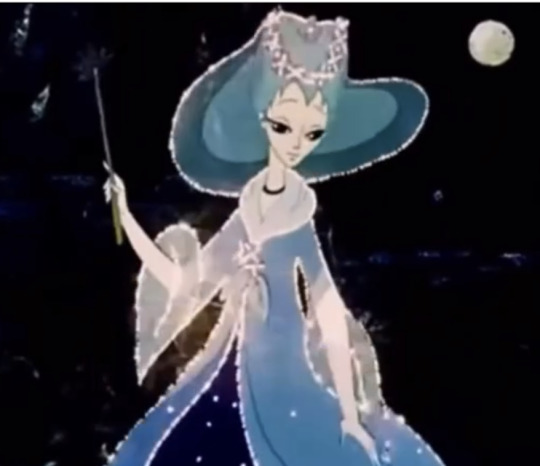
This beautiful, elegant creature is emphatically a fairy godmother, not a godmother who happens to be a fairy. She wears a gorgeous flowing gown, not of any earthly fashion, and though her age is indeterminate, she seems youthful yet wise. Her demeanor is kind and gentle, yet serious and stately, though she might have a slight playful streak. She takes on the role of the story’s moral authority as well, usually emphasizing that she comes to reward Cinderella for her goodness. Often, she first appears disguised as an old beggar woman to test the respective virtue of Cinderella and her stepfamily, and Cinderella earns her good will by giving her bread while the stepfamily scorns her. Sometimes she has attendant fairies or other magic-users to assist her as well: she might even be portrayed as the Fairy Queen, who lives in the forest like Shakespeare’s Titania and has countless fairies, elves, and sprites as her command. Fairy Godmothers of this type are most often seen in earlier adaptations: they include “La Fée” in Massenet’s opera Cendrillon, the Fairy Godmother in Prokofiev’s ballet, Inez Marcel in the 1914 silent film, Varvara Myasnikova in the 1947 Russian film, Celeste Holm in the 1965 version of Rodgers and Hammerstein’s musical, and the animated Fairy Godmothers both in the 1935 Betty Boop cartoon Poor Cinderella and in the 1979 Russian animated short.
The Grandmother Figure
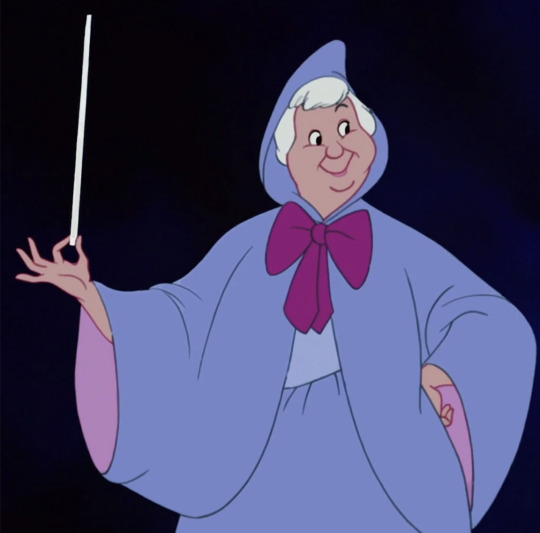
This Fairy Godmother is a little old woman, and she’s very human as fairies go. She might not be regal, or beautiful, but she radiates a sense of warmth and comfort like all the best grandmothers do. Her sweetness, gentleness, and maternal affection are just what Cinderella needs in her despair, and sometimes she can be adorably absentminded – forgetting where she put her wand, almost sending Cinderella off to the ball in her rags, etc. – which adds gentle comic relief to the story. Yet she also conveys the wisdom that comes with age, and her magic is just as powerful as that of any younger, more glittering fairy. The quintessential Fairy Godmother of this type is the one voiced by Verna Felton in Disney’s classic 1950 animated film. Several other animated versions aimed at children feature grandmotherly Godmothers too, like the versions from Jetlag Productions and Burbank Animation Studios. In the 1995 musical A Tale of Cinderella, “La Stella” is Cinderella’s actual grandmother, whose magic sadly couldn’t save her daughter’s life, but can save her granddaughter’s future. Jean Stapleton’s Fairy Godmother in the 1985 Faerie Tale Theatre adaptation is also very grandmotherly, although she has additional glamour and a sense of humor that bring her closer to the next type of Fairy Godmother on the list (see below).
The Sassy Glamour Queen
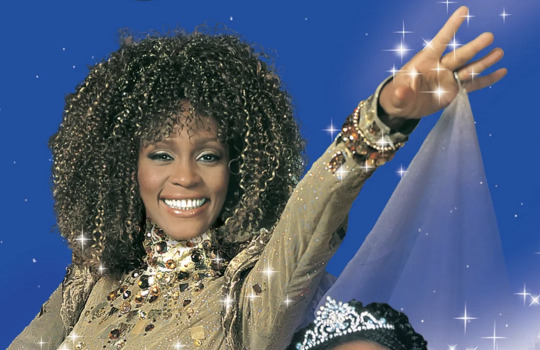
She’s beautiful, she’s elegant, she’s as smart as a whip, and she knows it! This is a more modern, lighthearted twist on the Regal, Ethereal Lady. The sparkle of the gorgeous gown she wears is matched only by the sparkle of her playful wit, and her confidence in herself is surpassed only by her confidence in Cinderella. Her sense of humor lifts Cinderella’s spirit, while her intelligence, poise, and indefatigable spirit make her a strong role model for the girl. Yet though kind and caring, this Godmother tends to be a bit more standoffish than others – though not in a bad way. She urges Cinderella to solve her own problems, not just rely on her, and to have courage and faith in herself against all odds. The most famous Godmother of this type is probably Whitney Houston in the 1997 version of Rodgers and Hammerstein’s musical. But Edie Adams’ elegant and mischievous Godmother in the original 1957 Rodgers and Hammerstein telecast is a good example too: although since she spends most of the story masquerading as a human, she combines this portrayal with another type (see the bottom of the list). Meanwhile, Jean Stapleton’s Faerie Tale Theatre Godmother has the elegance and humor of this type, but as an elderly woman, she combines it with the Grandmother Figure. Last, but not least, is Billy Porter’s nonbinary “Fab G.” in the 2021 Sony/Amazon musical.
The Eccentric Mage
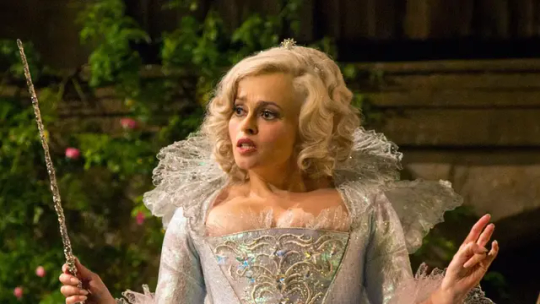
This funny and kooky Godmother is one of those beings who combine magic with just a little insanity. Her mind is like her powers: not entirely of this earth. Like the Regal, Ethereal Lady, she tends to disguise herself as a poor, ragged old woman to test Cinderella’s virtue and befriend her before the ball – but she takes it a step further and masquerades as a crazy homeless woman, who spouts odd remarks and whom anyone less kind than Cinderella might try to avoid. Yet even when not in disguise, she’s a bit of a ditzy oddball, who sometimes fumbles her spells once or twice before she gets them right: e.g. dressing Cinderella in the wrong type of clothing at first, or turning the pumpkin into the wrong item, or accidentally making it grow to a gigantic, greenhouse-shattering size before it becomes a coach. Fairy Godmothers of this type include Helena Bonham Carter in Disney’s 2015 live action film, “Crazy Marie” in the 2013 Broadway version of Rodgers and Hammerstein’s musical, Joyce Gordon in the Muppets’ Hey, Cinderella! and Estelle Winwood as Mrs. Toquet in The Glass Slipper. Although since Mrs. Toquet never takes off her “crazy poor woman” disguise, she combines this variant with another one: The Godmother Who Happens to Be a Fairy (see below).
The Godmother Who Happens to Be a Fairy
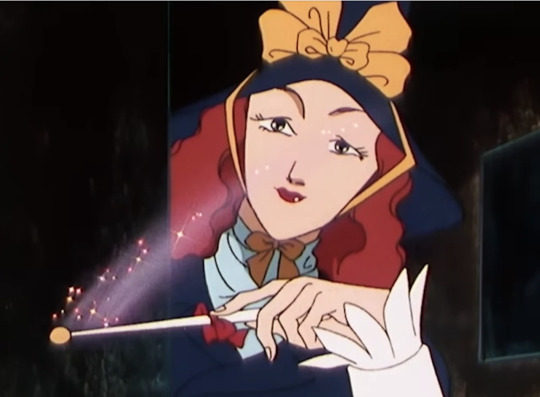
This is the most human portrayal of the Fairy Godmother: an ordinary woman who just happens to have magical powers, which she hides until they’re needed. Cinderella typically befriends her long before the ball, sometimes knowing her from childhood. She might be a household servant, or a kindly neighbor, or a traveling portrait painter, but whoever she is, you wouldn’t guess that she’s a fairy. She might even pretend not to believe in magic. She might also be Cinderella’s literal godmother – a close friend of her late mother’s, or even a relative. But no matter who she is, the friendship and the simple, human advice she gives to Cinderella (e.g. never to lose hope, or not to be afraid to love the Prince) are just as valuable as her spells. Edie Adams’ mischievous Godmother combines this characterization with the Sassy Glamour Queen in the 1957 Rodgers and Hammerstein musical, Estelle Winwood’s Mrs. Toquet in The Glass Slipper combines it with the Eccentric Mage, and Annette Crosbie’s sensible and ladylike yet quirky Godmother in The Slipper and the Rose combines it slightly with the Eccentric Mage too. Other examples are the artist Paulette in the anime series Cinderella Monogatari, the cook Mandy in the original novel of Ella Enchanted (who is also the Grandmother Figure), and the pasta-stirring grandmother La Stella in the musical A Tale of Cinderella (ditto).
@ariel-seagull-wings, @thealmightyemprex, @adarkrainbow, @themousefromfantasyland, @faintingheroine, @angelixgutz, @softlytowardthesun, @amalthea9
#cinderella#fairy tale#fairy godmother#adaptations#characterization#comparison#character types#patterns#fictional characters
86 notes
·
View notes
Text

Character Archetypes: The Kid Detective
Sometimes, the key to solving a mystery lies in following the tiniest of clues.
Requested by @kaiyves-backup
#Child detective#characters#character archetypes#character inspo#character aesthetic#character moodboard#character vibes#character concept#character inspiration#character info#character design#detective aesthetic#Detective moodboard#aesthetic#moodboard#moodboard request#character types#character template#the hardy boys#franklin w. dixon#The Tower Treasure
35 notes
·
View notes
Text
if I had a nickel for every time my favourite character was a dude with no brain to mouth filter, daddy issues, low self-esteem from being the only normal guy in a team of superpowered people, and a redheaded badass for a bestie, I’d have two nickels. which isn’t a lot but it’s weird that it happened twice.


#guys i think i have a character type#xander harris bumbled in and i said close enough welcome back fraction clint barton#sunny finally watches buffy#clint barton#hawkeye#xander harris#alexander harris#marvel#buffy the vampire slayer#btvs#marvel comics#hawkeye comics#comic hawkeye#616 hawkeye#616 clint barton#fraction hawkeye#buffyverse#buffy#character types#favourite characters#natasha romanov#natasha romanoff#platonic clintasha#clint and natasha#clint and nat#willow rosenberg#willow and xander#xander and willow#the scoobies#buffyposting
22 notes
·
View notes